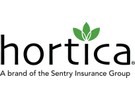According to FEMA, floods are the most common and costly type of natural disaster in the U.S. Recent rains on top of snow melt in the Midwest, as well as strong storms and hurricanes that have hit other parts of the country only reinforce that fact. But it’s not just weather systems that can create flooding. Breaks in dams or levees, or a change in water flow above or below ground due to new development can all lead to overflowing rivers and standing water—water that can affect your business in a variety of ways.
The fact is, every property is in a flood zone. It’s the specific flood zone that matters. Lenders don’t require flood insurance in low-risk areas (where flood insurance rates are low). They do require flood insurance in high-risk zones (where rates are naturally higher). So, if your building is located in one of the higher risk areas, and you have a mortgage, chances are good you already have flood insurance.
Flood insurance is available through the National Flood Insurance Program (NFIP). Check with your agent to see if you’re eligible. If your business is in a moderate- to low-risk flood area, a preferred risk policy gives you up to $500,000 of coverage for your buildings and up to $500,000 on the contents inside at low preferred rates. If you’re in a high-risk zone, a standard-rated policy provides similar coverage—but at higher rates. But be aware—flood insurance rules require a 30-day waiting period before any policy kicks in.
No matter what your business is or where it is, it’s important that you review your insurance policy to make sure you have all of your buildings, vehicles, equipment, personal property, and crops covered adequately. Here are some other insurance options to consider:
Endorsements than can include coverage for water damage
- Sewer and drain back-up coverage
- Mobile equipment coverage
- Data processing coverage
After a flood or other natural disaster, contact your flood insurance company immediately. A delay on your part could mean a delay in getting your claim processed. Be sure to include photos or video of the damage, as well as a detailed list of damaged items. If possible, include their value and supply receipts.
For more information: Hortica
Hortica
www.hortica.com
